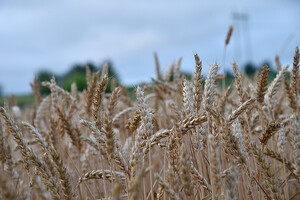It's hard to export during the war – and nowhere to go.

Ukraine produces 10% of the world's wheat reserves, 16% corn and about half of sunflower oil. But the war made it difficult to export products . In peacetime, the country exported 6 million tons of grain a month, most of which went through ports in the Black Sea. But Russia's naval blockade has halted that trade, according to The Economist.
Rail, road and river routes can carry less than 2 million tons per month. This means that stocks are accumulating and the problem is about to get worse. In June, wheat sown for the winter becomes hard and golden. But a fifth of Ukraine's elevators or storage facilities have been damaged by shelling or are in Russian-occupied territory. And the country already has a reserve from last season – more than 20 million tons of harvested grain, says Deputy Minister of Agriculture Taras Vysotsky. What will farmers do with the new harvest?
Farmers in southern Ukraine have already started harvesting winter crops; in other regions will begin soon. Despite a one-third drop in production this year, the Ukrainian Grain Association, an industry organization, still expects to harvest 26 million tons of corn, 19 million tons of wheat, 7 million tons of barley and 13 million tons of oilseeds annually. Some farmers would rather harvest grain in the hope that the ports would eventually reopen than see expensive transit to Poland or Romania eat away at their profits. The government believes that this year Ukraine will not have enough storage facilities for 10-15 million tons. The Grain Association estimates that the difference could reach 25 million tons.
Unharvested crops can rot or be stolen. To avoid this, farmers are trying hard to secure silo bags – long polyurethane sleeves that can hold about 200 tons of grain each. According to Vysotsky's estimates, about 50,000 such “sleeves” are needed to remove all surpluses. The government is also ordering mobile storage facilities that can be set up in the fields to protect grain from the weather and pests. Meanwhile, smaller producers enter into lease agreements for warehouse space. But they are often not certified by the state and usually do not have industrial dryers, which puts the crop at risk of damage. Maize can also be left in the fields for the winter, although at risk for quality and yield.
Western allies, faced with rising world food prices, offered their help. On June 14, US President Joe Biden promised to build temporary shelters on Poland's border with Ukraine. This can give some respite during the corn harvest, which will begin in September. But “the main task now is to cross the border physically,” says Vysotsky.
Read also: World prices for oil, timber, grain and oil have begun to fall
In any case, such remedies can only be partial and expensive. Anticipating higher logistics costs, some Ukrainian farmers are revising their crop composition in favor of more profitable varieties. Bohdan Kostecki, founder of the agricultural consulting company Barva Invest near Kyiv, says farmers have already replaced about a third of unprofitable corn with rapeseed and sunflower seeds. Others may decide to skip next season altogether. In addition to declining export earnings and rising fertilizer prices, the war left farmers with destroyed machinery and cut them off from fields in the occupied territories. Ivan Miroshnichenko, a farmer who grows wheat in Alexandria, a four-hour drive southeast of Kyiv, says he has little hope. “When a farmer sees that he is suffering, that his storage is overcrowded, that there is no light at the end of the tunnel, he will consider whether to plant it at all.”
Earlier it was reported that none of the countries that depends on grain from Ukraine, did not protest against the war , but began to negotiate with other countries.




